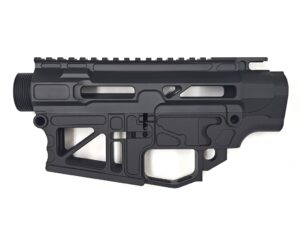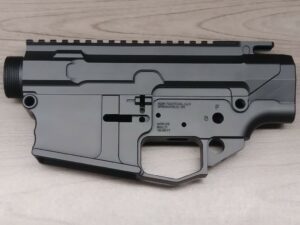Get The Right 80 Percent Lower Receiver Kit For A Customized AR
Whether you are looking for an effective tactical rifle, hunting weapon or even a shorter-range sniping rifle, the AR can be made to cater to any type of use.
The AR range of weapons are renowned for their versatility and ability to deal with almost any type of shooting style and conditions. But in order to configure your weapon to be the most effective in any of these scenarios, you need to profile your AR to certain standards.
Essentially, there are just six important elements in the build of a custom AR, followed by many great additions.
- Lower receiver
- Upper receiver
- Gas system length
- Barrel
- BCG (bolt carrier group)
- Hand-guards
All the great extras are almost everything else on the gun, which you can tinker with til’ your heart’s content. Don’t forget, you are probably going to have to shell out some money on a whole bunch of tools and jigs to help build your AR, so you need to factor those into your budget too.
What Will You Be Using Your Gun For?
But before you can truly start to configure your rifle, you need to decide what you actually want it for! Most people build a custom-made AR for specific reasons, wanting to tune the weapon to their particular circumstances, build and reactions against the type of shooting that they intend to do.
If you’re just looking for an all purpose rifle for hunting, target shooting, or self defense. Then a Standard Parts Kit will work perfectly. Everything in the kit is Mil-Spec and will contain all the screws, pins, fire control group, grip and springs that you need to finish your AR. Also you can choose to add on a buffer, tube & spring and a stock.
If you would rather make a rugged, precision, tactical rifle; you would then need a Deluxe Lower Parts Kit. Which would include an extended bold release, a more prominent safety selector, upgraded trigger, and larger magazine release buttons. In addition to screws, pins, fire control group, grip and springs; you can add-on the buffer, tube and spring stock as well.
Once you have the main use for your gun figured out, you can then head on to sourcing parts that are essentially ancillary to the main build, but might have an impact on your final gun. Will you be using it in the cold, and thus might need to have a larger trigger guard so that you can access it with gloved hands? Do you need it to have a lightweight trigger for rapid response? What magazine size would suit you best? Consider any special uses you may have in mind for your build, and how to go about making your AR a truly customized rifle.
The Main Parts To Your AR
While this basic breakdown of uses might dictate many different parts selected, you are plainly going to start with an 80% lower and build up from there. The lower assembly includes the fire control group parts such as the trigger and associated parts, the magazine lock and release, as well as the bolt release, and it is quite literally the heart of your AR-15 build kit. Get this right, and the rest of it should fall into place.
Choosing An 80% Lower Is The First Step
Choosing the right lower is actually dependent on the fundamental question of what style of shooting the gun is intended for. In terms of lowers, you could choose from forged, or billet, cast, or even polymer types, and each one has their own attributes. For instance, if you are aiming to build a general weapon to your own specification, you could get by with a low-cost polymer unit, but if you are aiming for a high-fire rate and the attendant stress, then a forged lower might be a better investment. If you are building a medium-range sniping rifle, then a billet lower might give you the balance of stiffness against cost. You could go all out and just build the strongest, most expensive gun that you can, using all the top end parts but, let’s face it, anyone can do that, and half the fun of it is building the perfect gun for you, rather than just a good strong gun.
Your lower is, as its name implies, is only 80% finished so it is up to you to do the rest of the work and the final quality of the weapon will depend to a great extent on the quality of workmanship that you put into completing your lower. This is regardless of whether you are looking for a snappy sharp-shooter or a hunting rifle, you will want to do the best job that you can on your lower, and that usually means using the best jigs and precision tools.
If you don’t have these, don’t be tempted to muddle through and guess hole positions, invest in the right tools, because if you get this gun right, you’ll no doubt want to build more. So, now that you have the lower figured out, whats next?
The Upper Receiver
The AR upper receiver holds all the good stuff that will determine many aspects such as the weight, accuracy, and general performance of your completed rifle. You need to be choosing the right parts to compliment the choice that you have made for the lower receiver. Once again, the quality of the parts that you select for all of these elements should be based on what you actually want to use the weapon for, and how much you really want to spend on it. There is a huge amount of parts to be had so you might want to do a little research and find the best combination of upper and lowers for your purposes.
Next, Is The Gas System Length
There are four main lengths of AR-15 gas systems in use today:
- Pistol
- Carbine
- Mid
- Rifle
Each one of these gas systems require different length gas tubes and hand-guards, so it is important to know which one you have before ordering parts for your AR-15. Once again, your decision will be based on the main purpose for your rifle build.
These are all important aspects in building the gun that you want to use, and it starts from the ground up with your 80% lower. Get that right and the rest of the puzzle will just fall into place.




